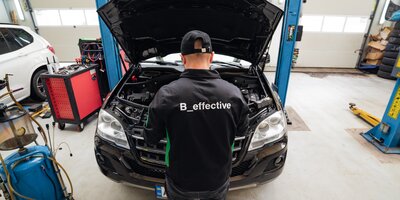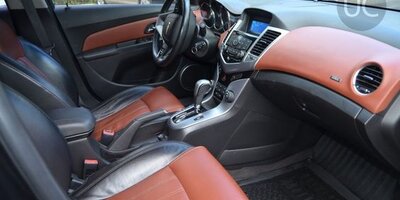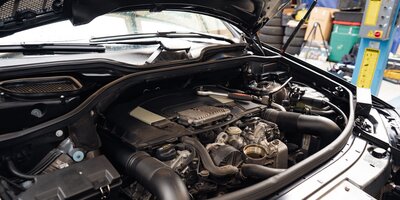BIZOL Fuel-saving Tips
The current energy crisis is forcing people to find ways to reduce all forms of energy consumption, from turning down the heating at home, to making only essential journeys in their vehicles. If you rely on your own vehicle to get around, there are a number of ways to minimise fuel consumption. While some methods may seem obvious, it is surprising how often even simple methods are ignored when the price of energy is not concentrating everyone’s minds.
We have drawn up a list of tips on how to get the most from each tank of fuel
Remove accessories, such as roof racks when not needed
As handy as roof racks, bike racks or roof boxes are, unfortunately they act as a brake and the higher the speed, the greater the wind-resistance. Anything that reduces aerodynamic efficiency, increases fuel consumption. The extra drag saps power and the only way to compensate for the lost power is to open the throttle wider. So, as soon as you no longer need a roof box, roof rack or bike rack on the vehicle, remove it.
Keep the vehicle well maintained
Ensuring that the vehicle is in a good state of repair sounds obvious to most people and is what the vehicle manufacturer advises but, sadly, is often neglected. Keeping a vehicle regularly serviced and properly maintained can have a significant effect on performance, overall running and fuel consumption. Even something as simple as getting the air filter changed at the specified service interval can make a substantial difference to both fuel consumption and engine wear.
Check and correct the tyre pressures
Underinflated tyres affect road safety and increase both braking distances and fuel consumption. Underinflation places excessive strain on the tyre sidewalls and carcass, ultimately leading to premature failure. More immediately, however, underinflation equates to greater roll resistance, which demands more power from the engine. Typically, fuel consumption increases by around 3% per 10% underinflation of the tyres, i.e., there is a 6% increase in fuel consumption if the tyres are underinflated by 20%.

Slow down
Driving around at low speed is not the answer, but even a slight reduction in the road speed can have a considerable effect. Speeding up to overtake another vehicle is usually not worth the cost of the extra fuel. Especially in city traffic, you often notice the vehicle that you have just overtaken is right behind you at the next set of traffic lights. So, when appropriate, apply just a little less throttle, especially on flat or downhill stretches of road, when a minimal throttle opening can maintain speed and massively improve economy.
Select the highest gear possible
Change up to the highest gear possible, as soon as possible. Care should be taken, however, as changing up too soon can place the engine under excessive load, actually resulting in higher fuel consumption. Nowadays, cars often have a gearshift indicator, informing the driver the optimum point at which to change gear. The indicator simply flags up when the engine is in the right speed range.
If your vehicle does not have a gearshift indicator, all you need to do is check the rev counter and change gear when it is appropriate to do so. An engine speed of 2,500-3,000 rpm is usually sufficient so that an upshift does not result in the engine speed dropping below 1,500 rpm.
Another technique that can be used is block gear changing, i.e., changing gear from 3rd to 5th or 2nd to 4th or 4th to 6th. Block changing prevents wasteful engine idling between gear changes; when the engine is decoupled from the gearbox. Note, when block changing, you must ensure that engine speed does not drop too low due to shifting two ratios at once.
Keep less fuel in the tank
Ironically, keeping the tank filled up has a negative effect on fuel economy. Diesel, for instance, is heavy. The more fuel the vehicle has to carry around in the tank, the greater the weight penalty. For example, a tank containing 70 litres of diesel, weighs approximately 57 kg, which, if only half full, saves the lion’s share of 30 kilos.
Adopt an anticipatory driving style
Using defensive driving techniques can bring numerous benefits, such as increased safety and improved fuel economy. Adopting such techniques is quite simple, the most important principle is to observe your fellow road users, i.e., keep an eye on where vehicles around you are and try to predict what manoeuvres they are about to perform. If you notice another vehicle is about to move into the space between your vehicle and the one ahead, you can ease off the accelerator, thereby significantly reducing the likelihood that you will need to apply the brakes but still maintain momentum.
Brake less frequently and severely
Applying the brakes always wastes fuel, because fuel has been burnt to get vehicle moving in the first place. When you apply the brakes, kinetic energy is converted into heat; the heat generated in the brakes is wasted to the air. Braking, of course, also increases overall wear, so the less you brake, the less wear the vehicle is subject to as a whole. Coast up to a junction and change down through the gears during the approach – rather than driving right up to the junction and applying the brakes hard; a style more commonly used by motorcyclists.

Avoid using the air-conditioning system
Some air-conditioning systems are more efficient than others but all air-conditioning systems consume significant amounts of power. The energy required to pump refrigerant around the system directly affects fuel economy as the compressor is driven by the engine. Use the air-conditioning system sparingly if you want to make fuel savings, as some systems can cause as much as a 10% increase in fuel consumption.
In hot weather, and if the prevailing weather conditions permit, you can open the vehicle windows at low speeds instead of using the air-conditioning. However, the higher the road speed, the higher the wind resistance. As the road speed increases, eventually it gets to a point where keeping the windows closed and using the air-conditioning system actually saves fuel!
Cut out unnecessarily idling
Idling in traffic or at the traffic lights costs fuel and is the reason why manufacturers introduced automatic stop-start systems. Emissions, and thus fuel consumption, can be reduced by simply switching off the engine. Do be careful though, as you need to weigh up the benefits of turning off the engine beforehand. Switching off for 30 seconds at the traffic lights is barely worth it unless the vehicle is equipped with an automatic start-stop system, but if you are stuck in a traffic jam it makes perfect sense. What drivers must remember is that there is no steering assistance or brake assistance when the engine is switched off, so think carefully before turning the engine off.
Remove excess weight from the vehicle
Carrying excess weight around affects fuel economy, after all, low-cost airlines have been making customers pay for increased payload for a long time now, i.e., passengers have to pay for hold luggage. If you can afford to leave baggage at home, many people do.
Simply taking items out of the vehicle that are not needed will increase the distance you can travel before needing to refuel. You will, however, only achieve noticeable gains if you remove heavy items from the vehicle, taking smaller, lighter items out achieves negligible results. Do not expect massive savings because, whilst it can make a contribution to fuel economy, it is not a gamechanger.

You might also like

The modern marvel of an internal combustion motor powers our vehicles, providing the strength and reliability we rely on for daily transportation. However, just like anything else subjected to constant use, motorized units experience wear and tear over time. Component deterioration can significantly impact performance and longevity. In this article, we will delve into the intricacies of engine wear meaning, explore the various causes behind it, provide actionable tips to reduce and prevent it. Furthermore, we will look at how specialized engine oils, such as BIZOL, play a crucial role in safeguarding your engine’s health. Let’s begin by understanding what engine wear is and the factors that contribute to it.

The melodious purr of a motor, the velvety transition of cog-wheel, and the elegant voyage along the expansive highway — these are the unmistakable characteristics of a meticulously calibrated self-shifting gearbox system. But what transpires when the motorized ensemble falters, the cogs gnash, and the voyage veers into an unforeseen tempest? Get into the realm of automatic transmission problems, a domain where automotive aficionados and everyday motorists alike encounter the enigmatic intricacies of this complex system.

Driving is a blend of exhilaration and convenience, but sometimes, your trusty car can hit a snag. One of the most frustrating issues is a coolant leak.
Coolant, often referred to as the versatile 'antifreeze,' assumes the uncelebrated role of an automotive guardian, ensuring your engine's harmonious operation. This unassuming fluid stands as a bulwark against the scorching summer heat and the bone-chilling cold of winter. Nevertheless, when the vigilance of antifreeze wanes, and it embarks on an unauthorized journey beyond its confines, ominous troubles come into view.

